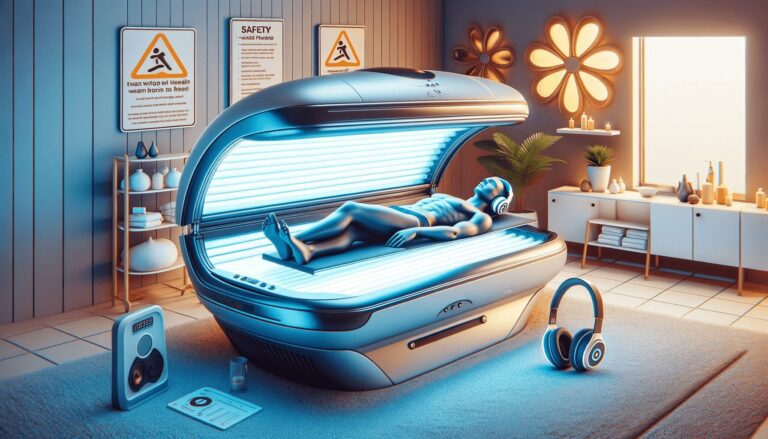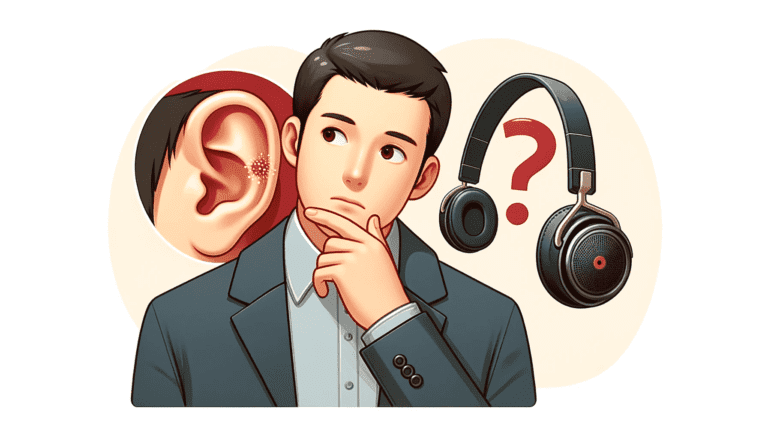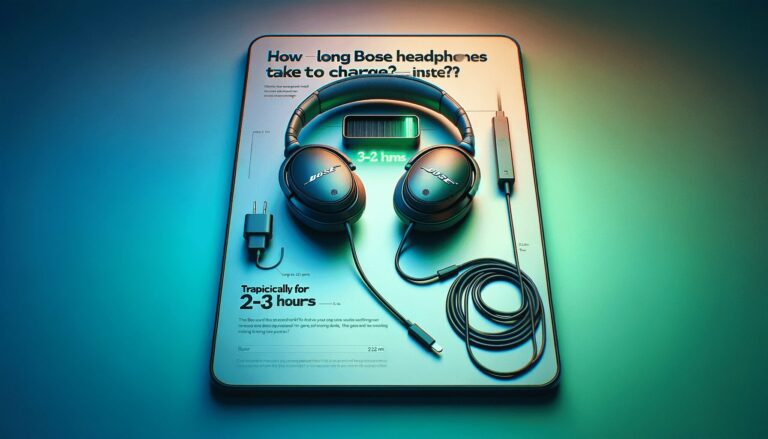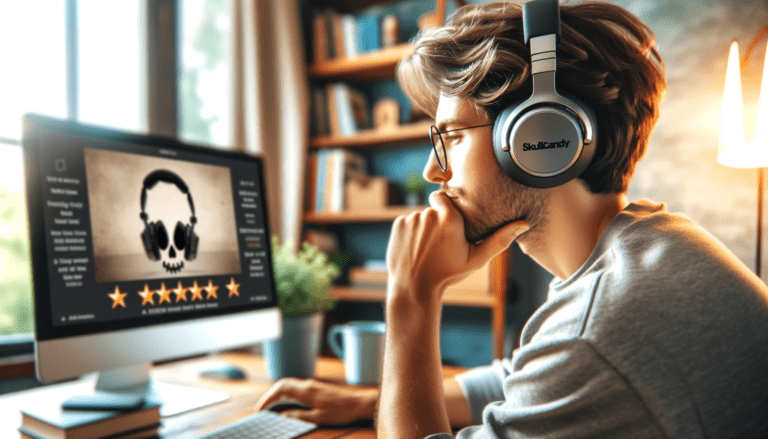Do you ever find yourself straining to hear the finer details of your favorite songs or struggling to immerse yourself in a podcast because your headphones just aren’t loud enough? It’s a common frustration, especially when you’re trying to block out the world and lose yourself in sound.
Whether it’s due to limited hardware capabilities, software restrictions, or simply the noisy environment around you, quiet headphones can significantly dampen your listening experience. But don’t let low volume levels hold you back.
In this article, we’ll guide you through practical steps on how to make your headphones louder, ensuring your audio is crisp, clear, and powerful enough to truly resonate. From simple adjustments to more technical enhancements, we’ve got the solutions to amplify your audio experience.
Let’s dive in and turn up the volume on your audio devices.
Optimizing Headphone Volume
Understanding Loudness Equalization
Loudness equalization is a pivotal feature for achieving a consistent audio experience across various media types. It works by assessing the audio content, identifying the loudest and softest elements, and then dynamically adjusting the volume. This process ensures that quieter sounds are amplified while louder sections are moderated, resulting in a more balanced audio output.
The benefits of loudness equalization are manifold. It reduces the need to constantly adjust volume levels, enhances the clarity of speech, and details in quieter sounds, and prevents sudden volume spikes. However, it’s important to note that loudness equalization can subtly affect audio quality, particularly with short release times. Therefore, it may be advisable to disable loudness equalization when using dedicated audio software with its own equalization features.
To enable or disable this feature in Windows, navigate to the ‘Enhancements’ tab in your audio settings. Remember that loudness equalization settings are applied system-wide and will affect all playback devices. The specific settings and options available may vary depending on your audio driver.
Troubleshooting Muffled Sound
When your headphones deliver muffled sound, it’s often a sign that something is obstructing the speaker. Debris can accumulate over time, leading to a loss of clarity in audio output. This is particularly noticeable if the issue is isolated to one earpiece. To address this, start by inspecting the earpieces for visible blockages and clean them carefully.
In some cases, muffled sound may also be a symptom of driver-related issues. Ensuring that your audio drivers are current is crucial. Visit the manufacturer’s website to check for updates. If you suspect a problem with the driver settings, such as a missing Loudness Equalization option, follow these steps:
- Press Windows + R, type
devmgmt.msc, and press OK. - Locate your sound card in the Device Manager, right-click it, and choose ‘Update driver’.
- If issues persist, consider a system restart or check for Windows updates.
Remember, volume inconsistencies between applications can often be managed through the Volume Mixer. Adjusting settings here can provide a more uniform listening experience across different software.
Enhancing Music Quality
To elevate your listening experience, it’s essential to delve into the advanced audio settings of your device. These settings allow for a more enjoyable music session, clearer dialogue in videos, and an immersive gaming experience. By fine-tuning these options, you can tailor the sound output to your personal preferences and the type of media you’re consuming.
Understanding the various sound enhancements available can make a significant difference. For instance, Windows Loudness Equalization focuses on volume balancing, ensuring consistency across different media. This is particularly useful when dealing with volume fluctuations. Enhancements like Bass Management and Speaker Fill can also contribute to enriched sound quality, tailored to the user’s preferences or the media type.
Here are some steps to improve your audio quality:
- Enable loudness equalization to balance volume across sources.
- Use the sound equalizer to match your listening preferences.
- Adjust audio balance for a finer sound experience.
- Consider Windows Sonic for Headphones for a virtual surround sound experience.
Remember, while these enhancements can improve audio quality, they may affect playback performance on lower-end systems. Always ensure compatibility with the media you’re playing to avoid any adverse effects on your audio experience.
iPhone Volume Boosting Techniques
Utilizing Volume Buttons Effectively
To achieve the best listening experience on your iPhone, it’s essential to master the use of the volume buttons. These buttons, located on the left side of your device just below the mute switch, are your primary tools for adjusting audio levels. The upper button increases the volume, while the lower one decreases it. This functionality is not just limited to calls and media playback; it extends to game sounds and notification tones as well.
Here’s a quick guide on how to use the volume buttons for different purposes:
- Music & Apps: Press the upper button to amplify the sound while enjoying music or using apps.
- Notifications & Ringtones: To increase the ringer and notification volume, use the same buttons.
- Calls: During a call, the volume buttons can help you adjust the caller’s voice to a comfortable level.
Remember, the volume buttons are context-sensitive, meaning they control different sounds depending on what you’re currently doing on your iPhone. For instance, if you’re watching a video, the buttons will adjust the video volume. However, if you’re on the home screen, they’ll control the ringer volume.
Disabling Headphone Safety Feature
If you’re experiencing volume limitations on your iPhone, the Headphone Safety feature might be the culprit. Apple introduced this feature to safeguard your hearing from high-decibel exposure. However, if you’re confident that your listening habits are safe, you can disable this feature to potentially increase volume.
To turn off the Headphone Safety feature, follow these steps:
- Open the Settings app on your iPhone.
- Scroll down and tap ‘Sounds & Haptics’.
- Select ‘Headphone Safety’.
- Toggle off the ‘Reduce Loud Sounds’ option.
Remember, disabling this feature could expose you to higher volume levels that may be harmful over time. It’s important to use this setting responsibly and consider re-enabling it for longer listening sessions or when in a noisy environment.
Common Headphone Sound Issues
Dealing with Low Volume
When your headphones don’t seem loud enough, it’s essential to identify the root cause. A faulty connection is often to blame for low-volume issues. This could stem from a problem with the headphone jack or plug. Ensuring a secure and clean connection can sometimes resolve this frustrating issue.
Volume inconsistencies between applications are common and can often be adjusted through the Volume Mixer. Here’s a simple guide to balance your audio levels:
- Right-click the speaker icon in the system tray and choose ‘Open Volume Mixer’.
- You’ll see sliders for each application. Adjust these to achieve a consistent volume level.
- If the mixer adjustments don’t help, consider enabling Loudness Equalization:
- Right-click the speaker icon and select ‘Sounds’.
- Navigate to the ‘Playback’ tab, click on your device, and choose ‘Properties’.
- In the properties window, click on the ‘Enhancements’ tab.
- Check the box next to ‘Loudness Equalization’ and press ‘OK’.
Remember, features like “Sound Check” are designed to maintain a consistent volume but can sometimes limit the maximum volume output. Disabling such features may provide an immediate boost to your headphone’s loudness.
Fixing Audio Output Device Issues
When your headphones are not recognized by your computer, it can be a frustrating experience. This issue often manifests as a ‘No Audio Output Device is Installed’ error, leaving you unable to enjoy your media. The first step in resolving this is to ensure that your headphones are set as the default playback device. To do this, right-click on the sound icon in the taskbar and select ‘Sound settings’. From there, you can choose your headphones from the list of playback devices.
If your headphones still don’t appear, you may need to manually show and enable them in the sound settings or address driver-related issues. Outdated or corrupted audio drivers are a common culprit. Here’s a simple checklist to follow:
- Update your audio drivers by visiting the device manufacturer’s website.
- If updating doesn’t help, try uninstalling and then reinstalling the audio driver.
- Check for Windows updates, as they can contain important fixes and enhancements for your audio system.
By following these steps, you should be able to fix the problem and get back to enjoying clear, uninterrupted sound.
Maintaining Headphone Quality
Cleaning and Maintenance Tips
Regular cleaning and maintenance of your headphones can significantly extend their lifespan and ensure consistent sound quality. A common method for cleaning headphones involves using a soft-bristled toothbrush to gently remove debris from the speaker and mesh areas. This technique is particularly effective for earbuds, where earwax and dust can accumulate and muffle the sound.
For the non-mesh parts of the headphones, it’s advisable to use a lint-free cloth slightly dampened with alcohol. This helps in disinfecting the surface and removing oils or residues without causing damage. It’s important to avoid using excessive moisture, as it can seep into the electronics and cause malfunctions.
Here’s a simple maintenance checklist to keep your headphones in top condition:
- Use a toothbrush to clean the earbuds’ speaker and mesh.
- Wipe the rest of the earbuds with a lint-free cloth dampened with alcohol.
- Check the cable for any signs of wear or damage.
- Store your headphones in a dry place when not in use.
- Avoid exposing your headphones to extreme temperatures.
Preventing Sound Distortion
To maintain the pristine quality of your headphones and prevent sound distortion, it’s essential to understand the factors that can lead to audio degradation. Proper handling and usage are crucial in preserving the integrity of your headphones’ sound. Here are some tips to avoid distortion:
- Avoid exposing your headphones to extreme temperatures, as heat can damage the internal components.
- Keep the volume at a moderate level; excessively high volumes can lead to blown drivers.
- Use equalizer settings judiciously; overemphasis on bass or treble can cause distortion.
Regularly checking your equipment can also help in preventing distortion. Ensure that the audio jack is clean and properly connected, as dirt or debris can cause sound issues. Additionally, be mindful of software settings and driver updates, as these can impact sound quality if not properly configured.
Conclusion
In conclusion, enhancing the volume of your headphones can significantly improve your listening experience. By utilizing the various techniques and settings discussed in this article, you can ensure that your headphones deliver the desired level of loudness without compromising audio quality.
Whether you are a music enthusiast, a gamer, or simply enjoy watching movies on your devices, maximizing the volume output of your headphones is essential for an immersive audio experience. Remember to adjust settings carefully and prioritize your hearing health while enjoying your favorite audio content.
Frequently Asked Questions
How can I optimize the volume on my headphones?
You can optimize headphone volume by understanding loudness equalization, troubleshooting muffled sound, and enhancing music quality.
What are some iPhone volume-boosting techniques?
Some iPhone volume-boosting techniques include utilizing volume buttons effectively and disabling the headphone safety feature.
How do I deal with common headphone sound issues like low volume?
To deal with common headphone sound issues like low volume, you can fix audio output device issues and adjust settings for optimal performance.
What are some tips for maintaining headphone quality?
To maintain headphone quality, ensure regular cleaning and maintenance, and take precautions to prevent sound distortion.
Why do my headphones sound muffled?
Headphones may sound muffled due to various reasons such as improper connections, dirt accumulation, or issues with the audio output device. Troubleshoot these issues to improve sound quality.
How can I increase the volume on my iPhone effectively?
You can increase the volume on your iPhone by using volume buttons, adjusting settings for music and notifications, and disabling headphone safety features for a louder audio experience.







